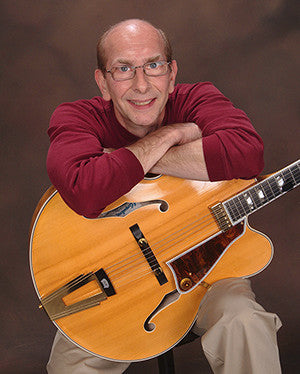Confessions of a Zen Guitar Monk
The banner atop this page tells you I play and arrange for solo jazz guitar. But my “day job” involves writing things (not including guitar blogs) on a range of topics for clients. I also write other things (including guitar blogs).
Once I had a great idea for another book. It would address how my years of training in Zen and the Asian martial arts have directly improved my guitar playing. Philosophically and practically, the principles of Zen have proven transferable to other aspects of my life—but most notably my musical life. Skills from one art, I have found, can often be applied to another in unexpected ways. Classical Zen thinking has enhanced so many aspects of studying and playing the guitar.
Interesting angle for a book, I thought. There was only one problem. It had already been written.
Authored by the late Philip Toshio Sudo, the published work is simply entitled Zen Guitar. It was a good thing I never got to write it. Sensei Sudo's prose is beautifully written and illustrates his far superior knowledge of the subject matter. Never could I have treated these Zen concepts with such eloquence and insight.
Zen Guitar walks us through a series of lessons—from white belt to black belt—that help us understand how Zen principles can be applied to the instrument. Quotes from musicians ranging from Eric Clapton and Jimi Hendrix to Miles Davis amplify the author’s guidance.
Zen is a highly personal thing. Just like music. Here are just some of the concepts I’ve personally embraced since adopting a Zen guitar monk's mindset:
-
Zen helps us become "centered" in our practice and performance. With a meditative focus, it is possible to achieve a completely "centered" state while playing and performing. This can be expressed as true integration of body, mind, and musical spirit.—a state of maximum concentration and boundless creativity. Through Zen guitar we train our minds to have 'no mind' when playing … that is, pure musical expression that’s inherently creative and delivered without conscious thought.
-
"From one thing, know 10,000 things." This is an ancient samurai expression cited in Zen Guitar. It refers to the fact that when we’ve mastered one art or skill, we are able to carry over that expertise to another art. An example: I have transferred techniques I learned in kobudo (weapons training in Okinawan karate) to certain aspects of my picking. The physical concepts underlying weapons work—holding a task-related object (for lack of a better term), maneuvering it, and changing the position or grip when necessary—were unexpectedly applicable to my right-hand technique.
- We have an obligation to "give the gift" of our music to others. Like other great religions, Zen Buddhism encourages us to bring love and compassion to the world. We’re uniquely able to do so through our music. I don’t have to tell you how beautiful the guitar can sound. You play it. The therapeutic value of music is well documented. Our instrument offers a wondrous means of stirring human emotion in positive and productive ways.
To this last point, I’m proud to say my playing has made many women cry. Two examples are below.
My style can be characterized as soft, mellow, easy listening guitar of (mainly) American Songbook standards. (It’s a sound that one recital attendee characterized as "music to lower blood pressure by.") At a nursing home visit, Rose, an elderly woman listening to Autumn in New York, shed tears upon hearing her and her late husband's favorite ballad. And at a restaurant gig, Loretta cried when she thanked me for playing her late mom's beloved Satin Doll.
These ladies’ tears were there. But so were their smiles.
As a self-proclaimed monk of Zen Guitar, I can honestly say I enjoy making people cry through my music. In the spirit of this musical philosophy, I encourage you to do so as well.

